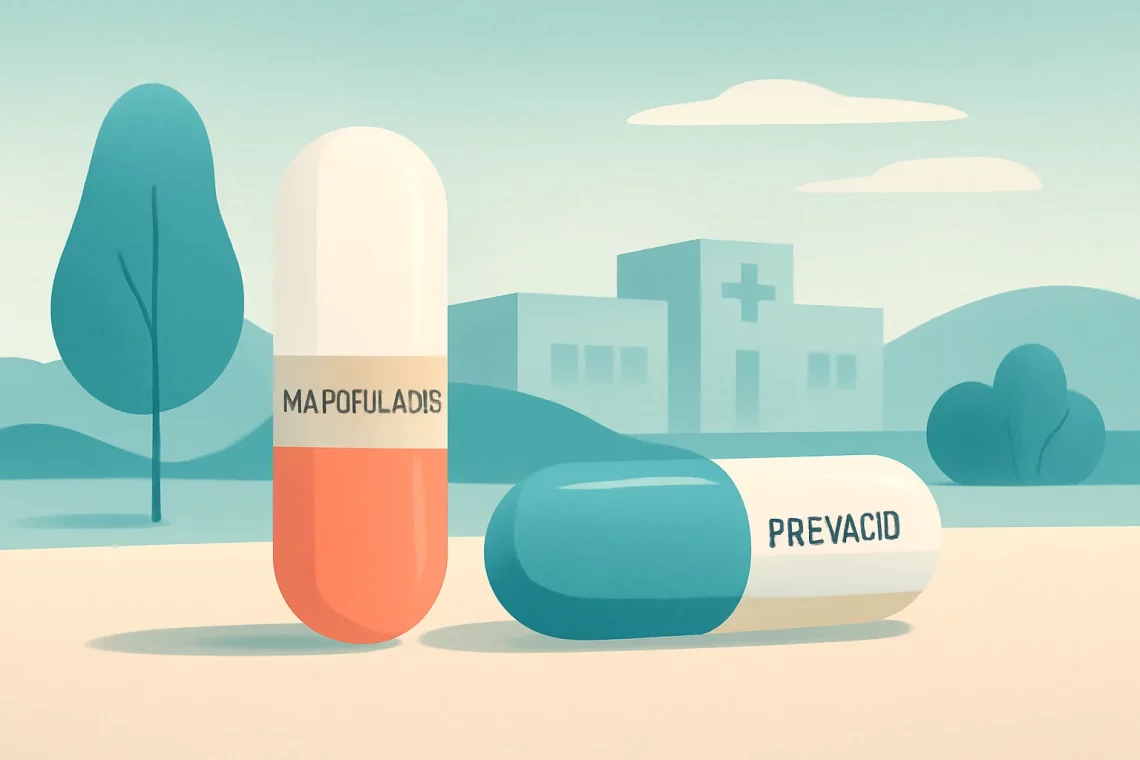
Pantoprazole vs Prevacid: Which Proton Pump Inhibitor is Better?
Pantoprazole and Prevacid are two medications commonly used to treat conditions related to excessive stomach acid, such as gastroesophageal reflux disease (GERD) and peptic ulcers. Both drugs fall under the category of proton pump inhibitors (PPIs), which work by blocking the proton pump in the stomach lining, thereby reducing the production of gastric acid. The increasing prevalence of acid-related disorders in the modern world has led to a growing interest in these medications, as they offer relief from discomfort and help prevent more severe complications.
Understanding the differences and similarities between Pantoprazole and Prevacid is essential for patients and healthcare providers alike. With various options available, choosing the right medication can significantly impact treatment outcomes and overall quality of life. As more individuals seek effective solutions for acid-related health issues, the conversation around these two medications continues to evolve. This article will delve deeper into the mechanisms of action, indications, side effects, and other essential factors associated with Pantoprazole and Prevacid, providing a comprehensive overview to aid informed decision-making.
Mechanism of Action
Both Pantoprazole and Prevacid belong to the class of medications known as proton pump inhibitors (PPIs). Their primary function is to reduce the production of stomach acid by inhibiting the hydrogen-potassium ATPase enzyme system located in the gastric parietal cells. This enzyme system is often referred to as the “proton pump,” as it is responsible for the final step in gastric acid secretion.
Pantoprazole works by binding to the proton pump, effectively blocking the secretion of hydrogen ions into the stomach. This action leads to a significant decrease in gastric acidity, providing relief from symptoms associated with acid-related conditions. The effect of Pantoprazole can last for up to 24 hours, making it a suitable option for those requiring long-term acid suppression.
Similarly, Prevacid, or lansoprazole, operates through the same mechanism. It inhibits the proton pump, thereby reducing acid production. Prevacid is known for its fast absorption and onset of action, which can occur within an hour of ingestion. Both medications are highly effective in managing conditions like GERD, where excess stomach acid can lead to inflammation of the esophagus, causing symptoms such as heartburn and regurgitation.
Understanding the mechanism of action is crucial for patients as it helps them grasp how these medications alleviate symptoms and promote healing in the gastrointestinal tract. However, while both Pantoprazole and Prevacid are effective PPIs, there may be individual preferences or responses to each medication, which can influence a healthcare provider’s choice.
Indications and Uses
Pantoprazole and Prevacid are primarily prescribed to treat various acid-related disorders. One of the most common indications for both medications is gastroesophageal reflux disease (GERD). GERD occurs when stomach acid frequently flows back into the esophagus, leading to irritation and discomfort. Patients suffering from GERD often experience symptoms such as heartburn, difficulty swallowing, and a sour taste in the mouth.
In addition to GERD, Pantoprazole is often prescribed for the treatment of Zollinger-Ellison syndrome, a rare condition characterized by excessive gastric acid secretion due to tumors in the pancreas or duodenum. Pantoprazole can help manage the symptoms and complications associated with this condition by providing effective acid suppression.
Prevacid is also indicated for the treatment of peptic ulcers, both gastric and duodenal. These ulcers can occur when the protective lining of the stomach or intestines is damaged, often due to the presence of Helicobacter pylori bacteria or prolonged use of nonsteroidal anti-inflammatory drugs (NSAIDs). By reducing stomach acid, Prevacid promotes healing of these ulcers and may also be used in combination with antibiotics to eradicate H. pylori.
Both medications may also be utilized in the prevention of gastric ulcers, particularly in patients who are at high risk due to NSAID usage. By reducing acid production, Pantoprazole and Prevacid can help prevent ulcer formation and its associated complications.
It is essential for patients to communicate openly with their healthcare providers about their symptoms and medical history, as this information can help determine the most appropriate medication for their specific needs.
Side Effects and Considerations
While Pantoprazole and Prevacid are generally well-tolerated, they are not without potential side effects. Understanding these side effects is crucial for patients, as it allows for informed decision-making and early identification of any adverse reactions.
Common side effects associated with both medications include headache, diarrhea, nausea, and abdominal pain. These side effects may vary in intensity among individuals, with some experiencing mild discomfort while others may find them more disruptive. In most cases, these side effects are temporary and tend to resolve as the body adjusts to the medication.
However, there are more serious side effects that patients should be aware of. Long-term use of PPIs has been associated with an increased risk of certain conditions, such as kidney disease, bone fractures, and gastrointestinal infections. The risk of Clostridium difficile infection, a type of bacterial infection that causes severe diarrhea, has also been noted in patients taking PPIs for extended periods.
Patients should also be cautious about potential drug interactions. Both Pantoprazole and Prevacid can interact with other medications, potentially altering their effectiveness or increasing the risk of side effects. It is vital for patients to disclose all medications they are taking, including over-the-counter drugs and supplements, to their healthcare providers.
In summary, while Pantoprazole and Prevacid can be highly effective in managing acid-related disorders, patients must be vigilant about potential side effects and interactions. Regular check-ins with healthcare providers can help ensure that the chosen medication remains the best option for the patient’s evolving health needs.
Conclusion
In conclusion, Pantoprazole and Prevacid are two widely used proton pump inhibitors that play a crucial role in managing various acid-related conditions. Both medications share a common mechanism of action, effectively reducing stomach acid production to alleviate symptoms and promote healing. Their indications range from GERD and peptic ulcers to more complex conditions like Zollinger-Ellison syndrome.
While both medications are generally well-tolerated, patients must remain aware of potential side effects and interactions with other drugs. Open communication with healthcare providers is essential for ensuring the best outcomes and addressing any concerns that may arise during treatment.
It is important to note that this article is not intended as medical advice. Individuals experiencing health issues should always consult with their healthcare provider to determine the best course of action for their specific situation.




